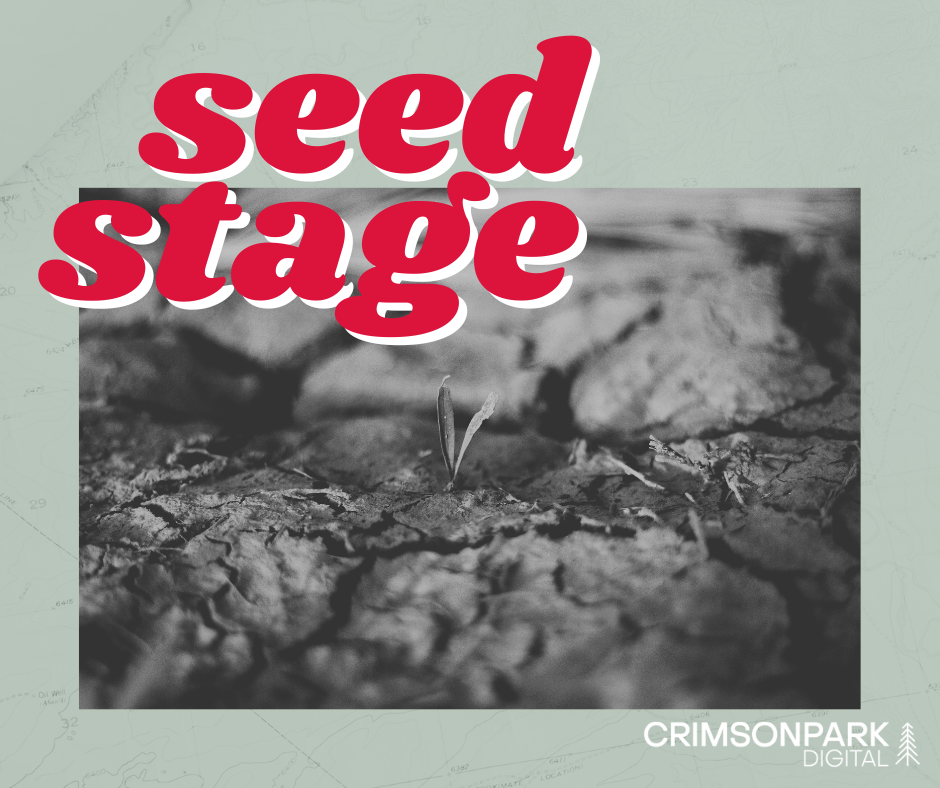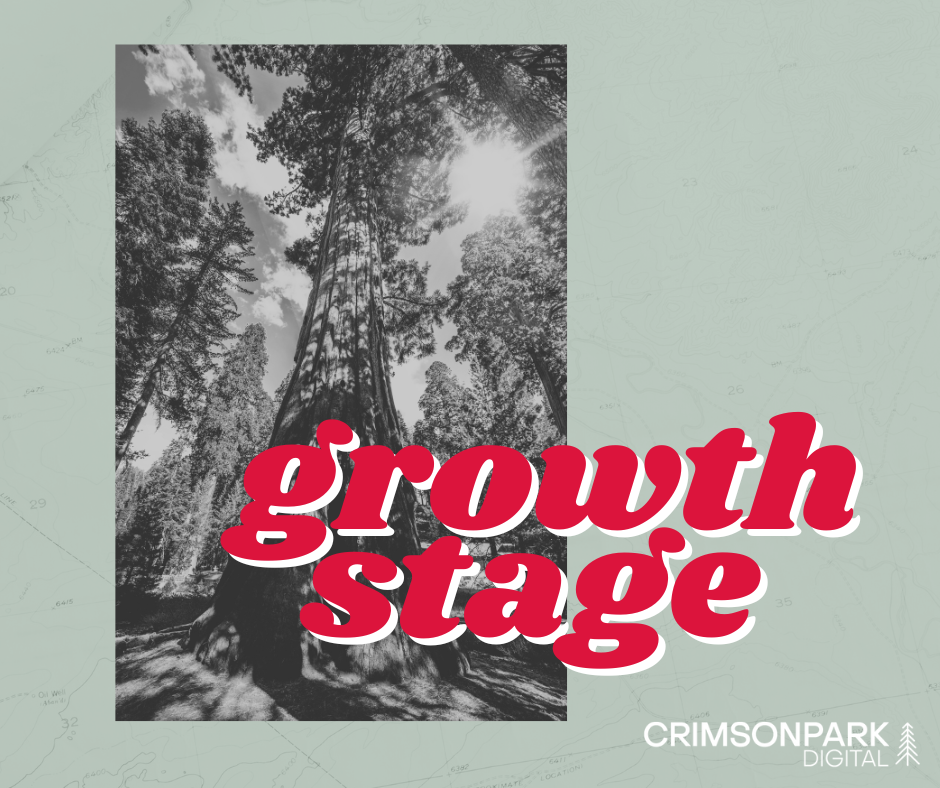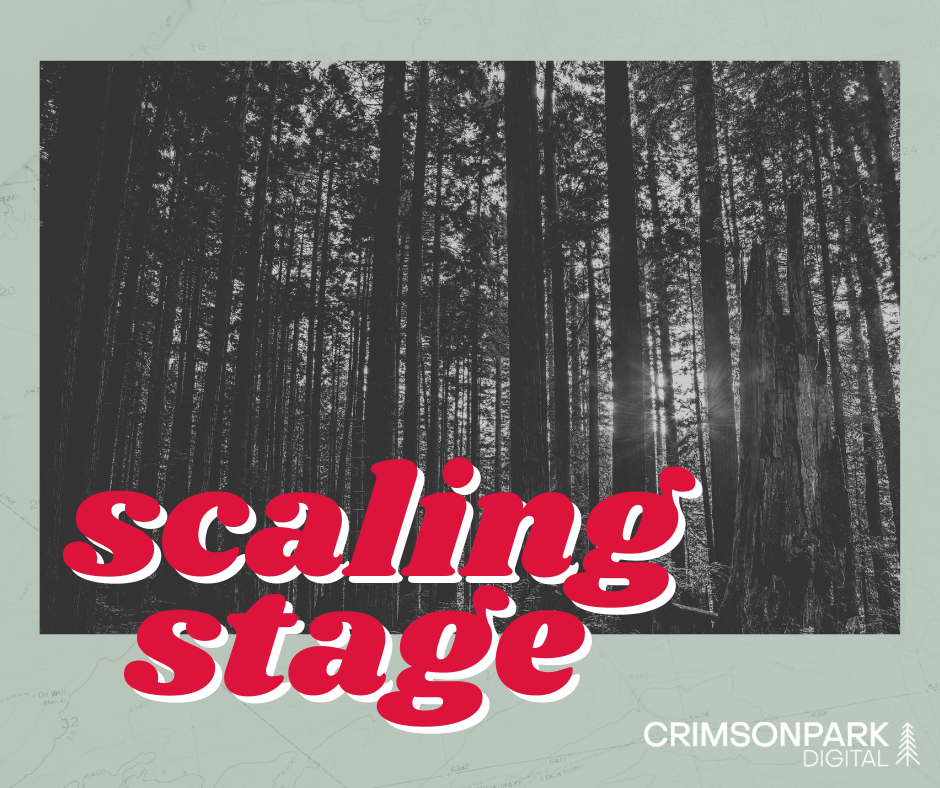Startup KPIs & Strategies to Focus on at Each Stage of Development
Marketing is not a one-size-fits-all kind of thing. As your business evolves, you will need to adjust strategies, add campaign tactics, and redefine startup KPIs (key performance indicators) to continue aligning marketing goals with organizational goals.
Figuring out just what your company needs at each stage of startup funding and growth, and how those strategies can be tracked, isn’t well-defined with a quick Google search. We made it easy for you, by combining pertinent startup stage details with our marketing expertise, all in one place.
Skip ahead to your startup’s stage or read on for the full picture if you’re just starting out.
Startup Seed Stage/Pre-Launch
The process of seeking funding from angel investors, friends and family, crowdfunding, or a mix of it all can be frustratingly slow. This is a great opportunity to spend time and resources building a solid foundation for your brand.
And though you may not be answering to anyone besides your internal leadership team (or yourself!) yet, there are metrics you can use to track the progress of your pre-launch growth.
Seed Stage KPIs
During the seed stage of startup funding, the following metrics should be kept in mind:
- Market research metrics. This includes the size of your target market, consumer behavior related to your target customer, and market trends.
- Development metrics. For example, the number of prototypes created or beta testers recruited.
- Milestone progress metrics. Milestones may include the number of investors secured, progress toward funding milestones, personnel recruited, and capital raised.
These KPIs will look different for each organization, depending on the startup’s industry, length of seeding, and goals.
Seed Stage Marketing Strategies
The pre-launch stage of startup development is all about planting the seeds that will grow into your dream business.
During this time, the following marketing strategies will contribute to meeting the KPIs you identified:
- Develop brand identity. This includes logo design, brand style guides, and building a messaging strategy.
- Identify target audience. In the earliest stages of startup business development, begin thinking about why your ideal customers need your product or service and how your brand fills that need in a way existing brands cannot.
Starting your business with a strong marketing-forward foundation will make navigating the next stages of business development much easier.
Early/Launch Stage Startups
You’ve developed your product or service to the point where it’s ready to be released into the world. To financially support your startup’s launch, you may be seeking funding from venture capitalists (VCs).
This process can take months or even years of pitches, meetings, and processing due diligence. During this time, you can keep track of specific milestones that can be used in future pitches or meetings.
Launch Stage KPIs
By tracking the following KPIs, you should be able to bring updated business growth data to each new meeting or VC funding pitch.
- Branded channel metrics. Branded channels may include your startup’s website and social media profiles. These KPIs would include follower growth, click-through rates, and website traffic.
- Customer acquisition metrics. VCs want to see how your company can obtain and retain customers. These metrics include conversion rates, cost per conversion, customer lifetime value, and customer retention rates.
- Media Metrics. Before investing, a group or individual investor will want to see that your brand is gaining traction. Media metric KPIs should include the number of mentions, reach of mentions, and influencer outreach.
These KPIs provide a glimpse into the story your business is creating and will inspire faith in investors that their investment is worthwhile.
Launch Stage Marketing Strategies
During this time, marketing efforts should focus on building buzz for your brand as it begins rolling out client-facing products and services.
Marketing strategies during early and launch stage startup development should include the following:
- Customer acquisition and retention strategies
- Comprehensive marketing campaign planning
- Influencer marketing
- Organic social media marketing
Each of these tactics will build measurable excitement for your brand as it grows into a customer-facing business.
Startup Growth/Post-Launch Stage
With some investment and traction to your brand, it’s time to seek funding from later-stage VCs and private equity firms. During this months-long stage, you’ll want key performance indicators to impress the people you’re pitching to, leading to more deals and accelerated growth.
Post-Launch Stage KPIs
The KPIs that later-stage VCs and private equity firms are interested in seeing post-launch relate to customer engagement, the development of your product or services, and the quality of leads generated.
Specific KPIs to track during the startup growth stage include:
- Revenue metrics. Revenue metrics include monthly recurring revenue, gross revenue, and profit margins.
- Customer engagement metrics. This includes branded channel engagement rates, customer satisfaction scores, and product reviews.
- Conversion metrics. Leads generated, sales conversion rates, customer acquisition cost, and customer lifetime value all help determine the quality of your startup’s conversions.
- Product or service development metrics. This could be the number of new features developed, new services offered, user feedback, and customer churn rates.
Now that your startup has some traction, these metrics can be used to give investors an idea of how the company is doing now, and how it could continue growing with their investments.
Post-Launch Stage Marketing Strategies
With business moving along, it can be easy to forget that marketing is a continuous process that should evolve with each stage of development.
After your product or service has launched, the following marketing strategies will contribute to continued business growth:
- Content marketing. Now is the time to develop processes for comprehensive website and social media content marketing campaigns.
- Social media advertising. Complement your organic social media strategy with paid social ads that will allow you to reach untapped potential customers on the digital channels they frequent.
- SEO strategy. Now that you’ve made a name for yourself, you must keep your brand ahead of its competitors. A strategic SEO plan will identify the keywords and content that resonate with your target audience, resulting in increased traffic and stronger search engine results.
- PPC advertising. Search engine pay-per-click ads will boost traffic to your website and leads or sales, as well as move your brand to the top of search results for relevant keywords and queries
Marketing efforts during the post-launch startup stage will help your brand reach the KPIs identified above and impress investors.
Startup Scaling Stage
You’ve achieved impressive market share and have a proven business model that generates sustainable revenue. The only thing left to do now is to grow more by expanding into new markets, launching new products or services, and optimizing operations.
Scaling Stage KPIs
During the scaling stage, you’ll want to measure success based on the following:
- Expansion metrics. This includes the success of new market entry, expanding globally, and launching new product lines or services.
- Operational metrics. Streamlined operations can be measured by employee retention and operational efficiency.
- Financial metrics. Financial metrics to focus on during the scaling stage include ROI, cash flow, and profit margins.
Investors want to see that their investment is continuing to grow, and that can be demonstrated through these metrics.
Scaling Stage Marketing Strategies
Marketing during the scaling stage is about refining, hyper-targeting, and supporting new markets or product lines.
Marketing tactics during the scaling stage of startup development include:
- Brand messaging refinement. Review brand guidelines and establish branding standards that will be easy to replicate as the business expands, ensuring consistency across channels.
- Hyper-targeting. Targeted marketing campaigns will acquire new customers and optimize the existing customer acquisition funnel.
- Influencer marketing. Influencer campaigns are a great way to spread the word about new products, services, or locations during the scaling stage of startup growth.
These three specific tactics should be utilized alongside existing content marketing, SEO, PPC, and social media marketing campaigns for a comprehensive marketing strategy that leads to the results investors want to see as your business scales.
Building The Right Marketing Team to Meet KPIs
Having the right people to support you in your marketing efforts at each stage of startup development is essential for getting the results you want without wasting resources. There are two ways we suggest planning marketing efforts for startups:
1. Hire a fractional CMO
This might be best in the early stages of development when you want to include a CMO in pitch meetings but don’t have the financial ability to hire a full-time Chief Marketing Officer. A fractional CMO provides marketing expertise and direction at a fraction of the cost of a CMO (including their salary, healthcare benefits, and other expenses).
2. Collaborate with a marketing agency
Marketing agencies are ideal for startups without internal marketing teams or with very limited internal teams. Agencies bring with them a team of experts to share ideas, tactics, and experience that will help your business grow. Depending on the stage your organization is in, it may be more affordable to hire an agency than to hire a full internal marketing team. This isn’t necessarily just for monthly retainer work; agency teams can also assist with branding development, pitch deck creation, and other foundational projects!
To learn more about how our team’s expertise and techniques help startup brands like yours, reach out to us today to request a free consultation.
Frequently Asked Questions
Do you need marketing in the startup seed stage?
Even when you are in the tiring pitching stage of your startup, you should still incorporate marketing into your business plan. Marketing efforts during the startup seed stage include developing a brand identity, creating a messaging strategy, and identifying your target audience.
How can you scale marketing strategies for startup growth?
Scaling startup marketing strategies for growth will require refining brand messaging so it is easy to replicate as the business expands, developing your audience for more targeted campaigns, reaching new audiences through PPC advertising, utilizing influencers to spread the word about new products or services, and continuing organic content marketing efforts.
What KPIs do investors want to see during startup post-launch?
During the growth stage or post-launch stage of startup development, investors want to see how your customers are engaging with your brand, revenue statistics, lead acquisition metrics, and product or service development metrics.





